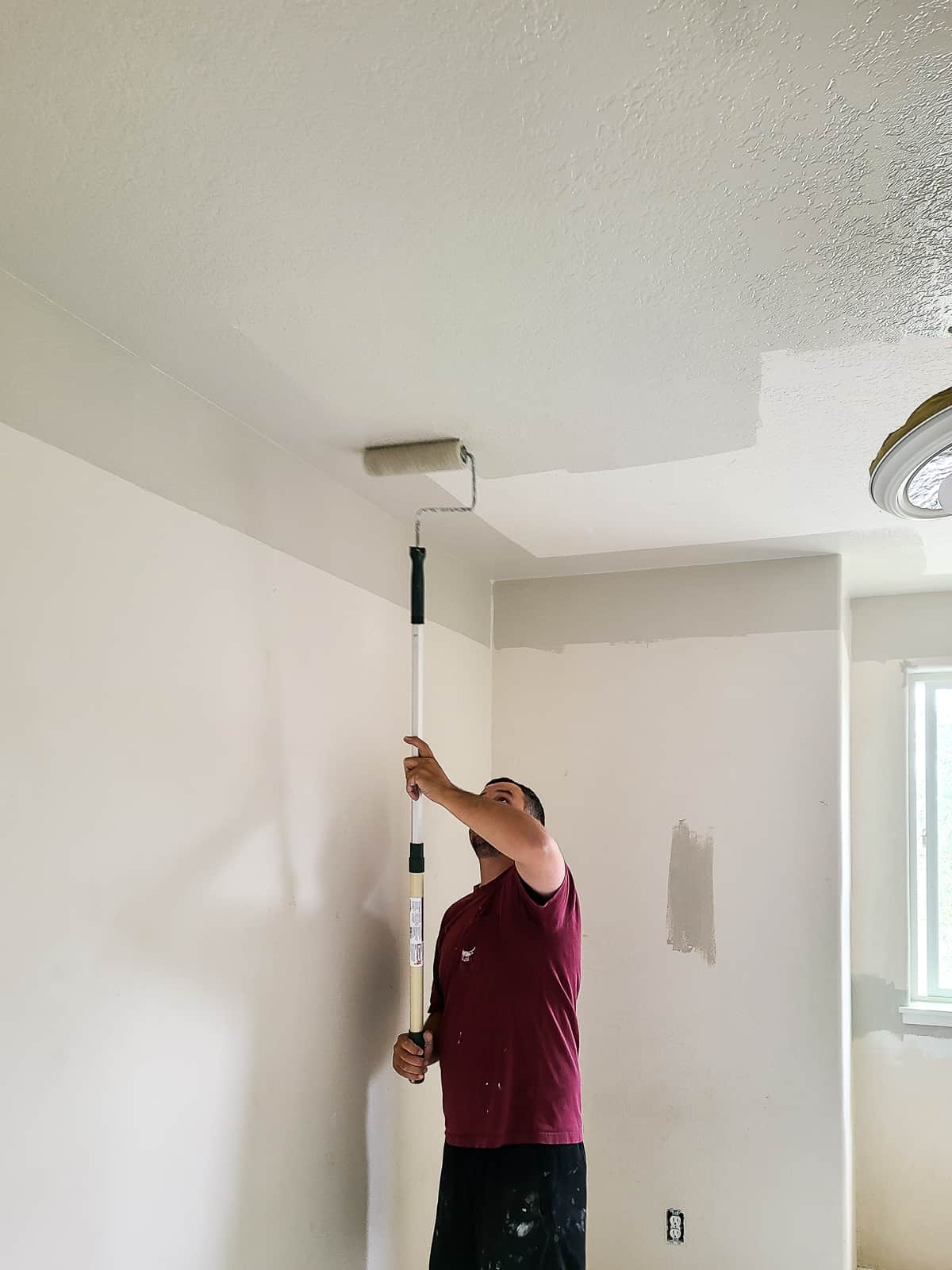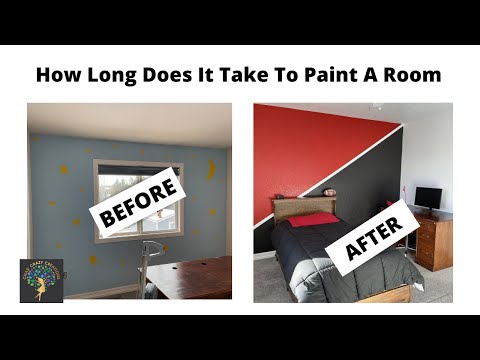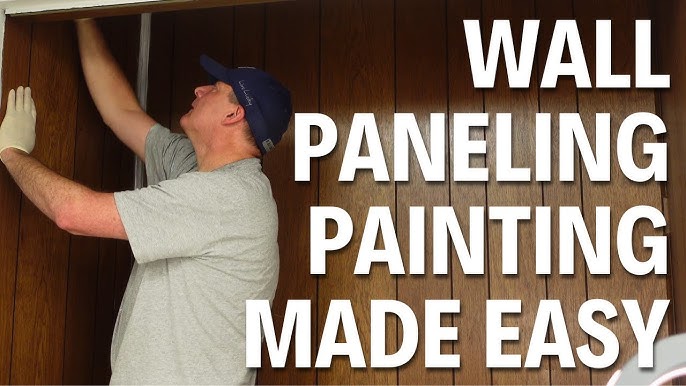Painting a bedroom can transform your personal space into a sanctuary of comfort and style. But how long does it really take to refresh those walls with a new coat of paint?
You might be wondering if it’s a weekend DIY project or something that requires more time and planning. Understanding the time commitment can save you from unexpected disruptions and help you manage your project smoothly. We’ll break down the process step-by-step, revealing tips and tricks that could save you hours.
By the end, you’ll know exactly how to plan your painting project with confidence, ensuring a stunning finish that you’ll love waking up to every day. Keep reading to discover the secrets of efficient painting and how you can achieve professional results without the hassle.

Credit: www.youtube.com
Factors Affecting Painting Time
Big bedrooms take more time to paint. Small rooms are quicker. More walls mean more work. You will need more paint.
Damaged walls need fixing first. Holes and cracks must be filled. This can take extra time. Smooth walls are faster to paint.
Different paints dry at different speeds. Some finishes need more care. Glossy paint might take longer. Matte is usually quicker.
One coat is faster. Two coats give a better look. Dark colors may need more coats. Each coat needs time to dry.
Preparation Steps
Get all the paint supplies ready. You need paint, brushes, and rollers. Don’t forget a paint tray. Buy some drop cloths too. Painter’s tape is very helpful. Make sure you have a ladder if needed. Gather sandpaper for rough spots.
Move all furniture out of the room. Make a clear space to work. Store items in another room. Remove any wall decor. Take down curtains and blinds. Clean the walls and corners.
Use drop cloths to cover the floor. Protect any furniture left in the room. Cover it with plastic sheets. Secure covers with tape. Ensure surfaces are safe from spills.
Apply painter’s tape around edges. Cover the door frames and window sills. Tape light switches and outlets. Make sure tape is smooth. Check for gaps. This keeps paint lines neat.
Time-saving Tips
Short strokes help cover walls fast. Use a roller for big areas. Cut in edges with a brush. Always keep a wet edge to avoid streaks. Plan your moves to save time.
Good brushes and rollers make a big difference. They spread paint better. Less time is wasted fixing mistakes. Durable tools last longer and work well. Spend wisely on these tools. It helps in the long run.
A partner makes painting quick. One can paint, the other can cut in. Switch roles to rest and keep energy. Work together on large walls. It makes the job fun and fast. Two people finish faster than one.

Credit: www.makingmanzanita.com
Estimating Painting Time
Room size affects painting time. A small room takes less time. A larger room needs more hours. Walls and ceiling need paint. Measure the room first. Know the area to paint. Use the room’s square footage to estimate time. Painting a small room may take 2-4 hours. Larger rooms can take 6-8 hours or more.
Experience matters in painting. A beginner takes longer. An expert paints faster. Beginners need more breaks. Experts are steady. Time will vary. Practice makes painting quicker. With time, skills improve. Speed increases with confidence.
Paint needs time to dry. Drying time adds to the total. Allow 2-4 hours for drying. Humidity affects drying. Temperature plays a role too. Wait before applying a second coat. Patience ensures a good finish.
Post-painting Cleanup
Carefully peel off the tape from the edges. Move slowly to avoid pulling paint. Take off the covers from furniture and floors. Dispose of them if they are disposable.
Rinse brushes under warm water. Use soap if needed. Rollers need washing too. Squeeze out the paint. Dry them with a towel. Store them properly for next use.
Check local rules for paint disposal. Never pour it down the drain. Seal the can tightly. Take it to a recycling center. Keep our planet clean.

Credit: www.youtube.com
Frequently Asked Questions
How Long Does It Take To Paint A Bedroom?
Painting a bedroom typically takes 2-4 hours for walls alone. Time varies depending on room size, preparation, and drying time. Including ceiling and trim may add a few hours. Proper preparation like taping and priming ensures a smoother painting process and better results.
What Factors Affect Bedroom Painting Time?
Several factors influence painting time, including room size, number of coats, and type of paint. Preparation, such as patching holes or taping edges, also impacts time. An experienced painter may complete the job faster than a beginner, affecting overall time spent.
How Can I Speed Up Painting My Bedroom?
To speed up painting, ensure proper preparation by cleaning and priming surfaces. Use quick-drying paints and efficient tools like rollers. Organize your workspace to minimize interruptions. Hiring a professional can also expedite the process, providing expertise and efficiency.
Is It Necessary To Prime Before Painting?
Priming is essential for best results, especially on new walls or drastic color changes. It ensures better paint adhesion and longevity. Priming can also reduce the number of paint coats needed, saving time and effort in the long run.
Conclusion
Painting a bedroom can seem overwhelming. But with proper planning, it’s manageable. Small rooms may take a day. Larger spaces could need more time. Preparation is key. Gather all materials before starting. This saves time and effort. Remember, patience leads to better results.
Take breaks if needed. Enjoy the process and watch your space transform. Fresh paint can refresh your room’s vibe. You can do it. And you might even have fun. Whether a quick touch-up or a full makeover, painting can be rewarding.
Happy painting!
